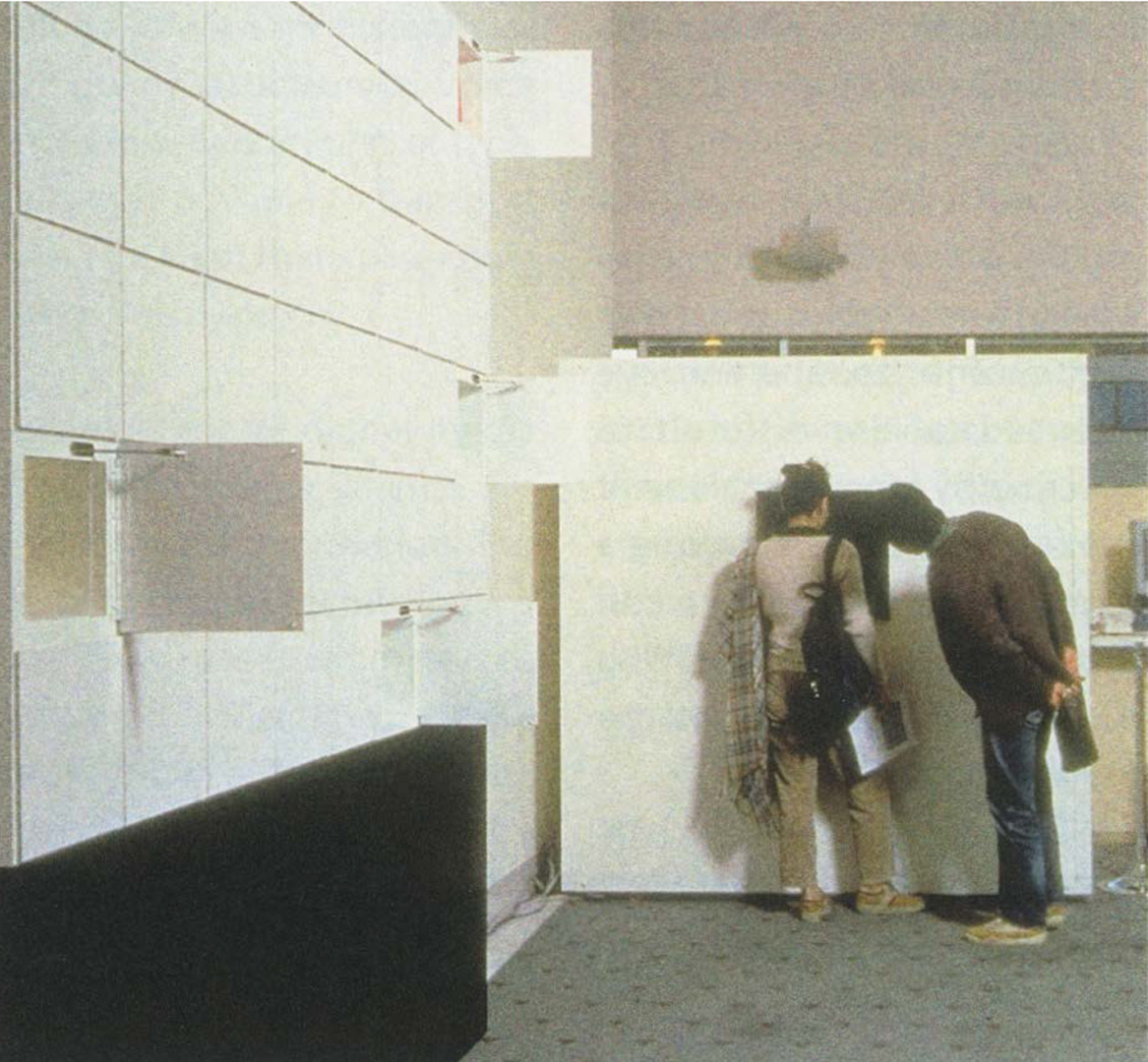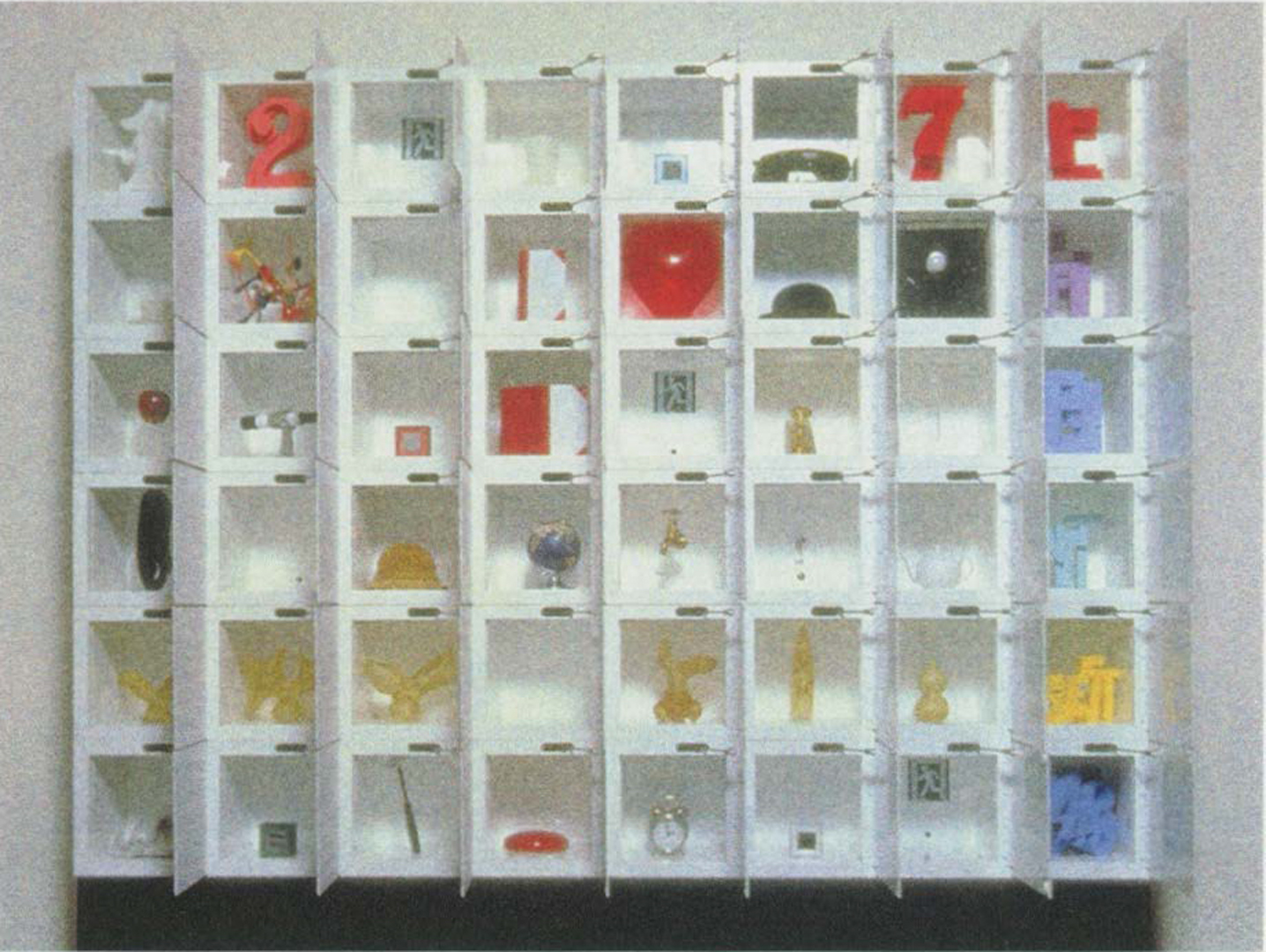Masaki Fujihata: Global Interior Project: Networked Multi-User Virtual Environment Project
Artist(s):
Collaborators:
Title:
- Global Interior Project: Networked Multi-User Virtual Environment Project
Exhibition:
Creation Year:
- 1996
Category:
Keywords:
Artist Statement:
Global Interior Project is a multi-user, multi-cultural communication playground built on a networked 3D virtual environment. Visitors interact with this virtual world through one of several “Cubical-Terminals”, where 3D graphic workstations are installed and connected to the server. Using a track ball to navigate the virtual world, visitors meet and talk to each other within the matrix as they access it from different locations.
Each terminal is connected to the same virtual world, so that participants sometimes run into one another as they enter from different Cubical-Terminals. While they are in the same (virtual) room, they can talk to each other over the telephone handset and see each other’s faces mapped onto objects in real time.
As part of the installation, “Matrix-Cube” is a kinetic sculpture constructed as a metaphoric map of the virtual world. It represents the real world because it is a real installation. It consists of a number of boxes arranged in the form of a matrix. The individual cubes of Matrix-Cube interact with participants in virtual rooms that can be explored at each Cubical-Terminal. In short, while you are in virtual room X, the door of room X of the Matrix-Cube opens. Usually, several doors of the Matrix-Cube are open simultaneously, since each participant explores the matrix in a different way.
Each room has an object (an apple, a hat, a door knob, and so on) that indicates the room’s identity. The Matrix-Cube is a visualized model of this networked virtual world that shows the activity of the virtual environment in real time. The Real World is only a map of the Virtual World, for one’s virtual existence. A video image is taken of the front of the Matrix-Cube sculpture and is mapped onto one of the virtual room’s walls. When participants click on a certain cube in the image of the Matrix-Cube, they jump into that particular virtual room.
By manipulating the track ball, participants propel themselves through the room to explore the objects. Each room also has four windows, one on each wall of the room. When visitors move out of a virtual window, they encounter an earth texture, a reminder of the concept of Global Interior Project. When they exit through a window, a warp sound is generated, and the participant location changes to another room, which contains a different object. When more than one person is in the room, they can see each other with their faces mapped onto a cubic avatar, and they can talk to each other.
With this system, participants can experience a triple-existence: one in the real world, one in the virtual world, and one in the image of the real within the virtual world. These shifting dimensions raise some intriguing questions: What is the real value of one’s address or location? Which is the reality? How is one’s existence supported?
Global Interior Project is an application running on lnterSpace. The first prototype was made by using lnterSpace as an infrastructure. It has been shown at Intercommunication 95, Spiral Garden, and P3 Gallery. The multi-ISDN-port lnterSpace server is running at NTI Software Corporation’s San Francisco branch. Currently, the server is linked with Stanford University, Golden Gate College, Cal Arts, and other institutions.
The server consists of a UNIX workstation and a special soundmixing console. The workstation, specially designed to enable the console to mix various sounds from various places, manages participants’ behavior in the virtual space. Sounds are mixed according to parameters generated by participants’ positions in virtual space.
Affiliation Where Artwork Was Created:
- Keio University






